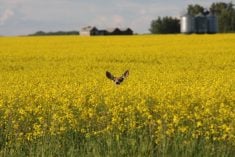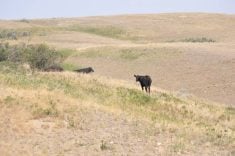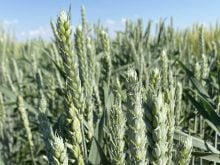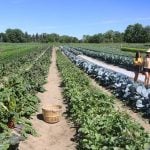Saskatchewan’s cattle industry has its first case of anaplasmosis since an outbreak in 1983.
The reportable disease has been found in a herd located south of Assiniboia, Sask., 48 kilometres from the United States border. It is the same area where 16 herds were infected 25 years ago.
Also known as tick fever, the disease can cause fever, anemia, weakness, respiratory distress and in some cases death in cattle, particularly those older than three years.
The latest case was discovered as part of a routine bovine serologic survey conducted by the Canadian Food Inspection Agency between the fall of 2007 and the spring of 2008. During that time, more than 15,000 samples were collected from mature cattle at slaughter.
Read Also
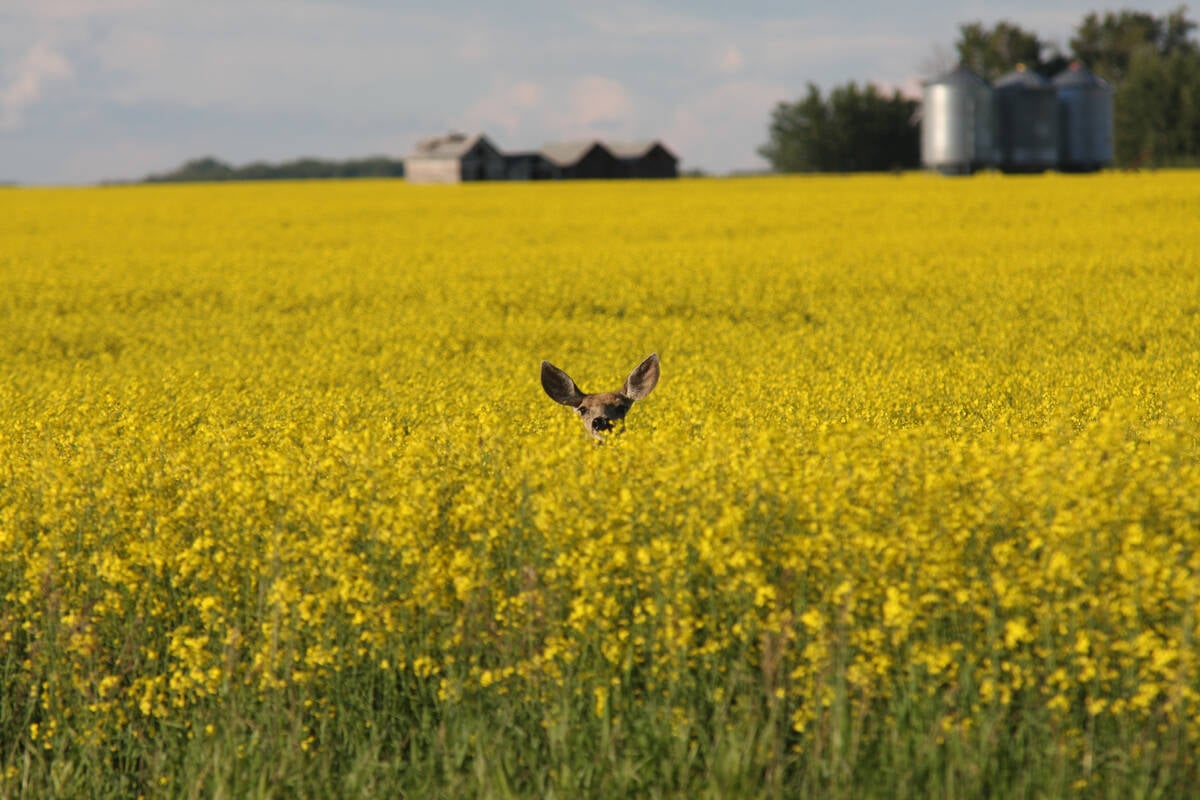
Drones now used to assess wildlife crop damage in Saskatchewan
Wildlife damage in Saskatchewan crops is now assessed by drones and artificial intelligence.
One of those samples collected in January and analyzed in a CFIA lab in Lethbridge in July contained an antibody indicating the animal could have been harbouring the disease.
CFIA officials traced the animal back to the Assiniboia farm using its ear tag.
“That’s one of the real benefits to having those tags,” said Sandra Stephens, disease control specialist with the CFIA.
The agency tested 82 animals in the herd Sept. 22 and one came back with a positive diagnosis, although it showed no clinical symptoms of the disease. The animal was slaughtered Oct. 22.
“There is no implication for human illness associated with this particular organism. It is truly just a disease of cattle,” said Stephens.
It is deemed a disease of “major economic importance” to the Canadian cattle industry because of production losses and the potential for death of the infected animals, but it is not a major trade irritant.
“It doesn’t have the same impact as foot-and-mouth disease would have because the U.S. isn’t going to close the border to us because the disease is endemic there,” said Stephens.
Lebanon is the only country other than Canada that has a requirement to test for the disease and Canada doesn’t ship there.
Canada softened its import restrictions for live cattle coming across the border from the U.S. in 1996. One test has replaced the more onerous requirement for two tests and a negative herd test.
One other case of anaplasmosis has been reported since the change, a positive diagnosis in a Saskatchewan bison herd in 2000.
Anaplasmosis is far more prevalent in the U.S. because of long summers in the southern states that allow tick populations to more efficiently transfer the disease among animals.
The disease has been introduced to Canada several times by infected cattle imported from the U.S.
Stephens said the Assiniboia herd had not imported any cattle but she said there are a number in the area with U.S. tags. Some of those animals were imported while others crossed the border from adjoining pastures. Wildlife can also carry the disease.
The CFIA said with Canada’s short summers, the tick population is not good at transmitting the disease. But that could change as summers get hotter and longer. There is speculation that bluetongue, another costly cattle disease, is spreading in Europe because of climate change. So the agency plans to keep close tabs on the transmission of anaplasmosis.
Five herds adjacent to the farm where the disease was found have been quarantined and will be tested between Nov. 15 and the first week of December. The original herd will also be retested, including seven animals that were missed the first time around.
Cattle that test positive will be destroyed.



